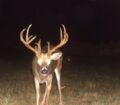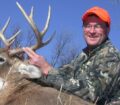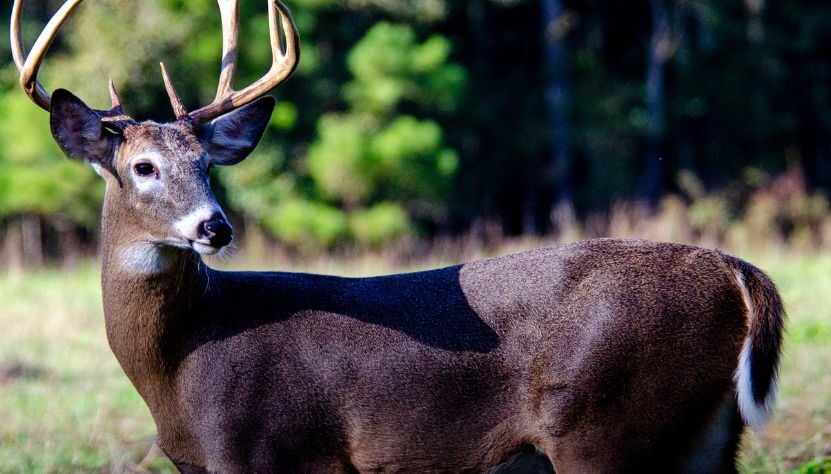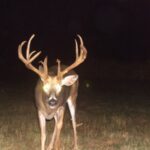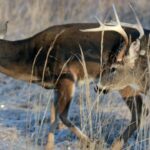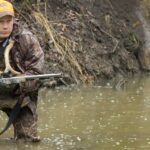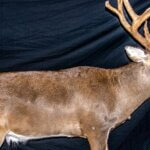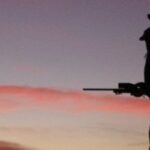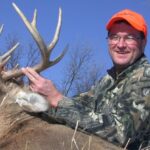Editor’s Note: If you’re still ready to hunt deer, hunters all across the U.S. have learned that they can be successful in taking big bucks in February in the South. You’ll have to study each state’s regulations in Alabama, Florida, Mississippi, Texas, and Virginia to learn when deer season ends—generally around February 10th. The rut is still taking place at the end of January and in February in many sections of the South. If you don’t have a place to hunt, check out some of the fine hunting lodge operations available or look at public lands in each state and their regulations. Although February deer are primarily nocturnal, you can find them and possibly take your best deer of the year.

First Strike Approach
Longtime deer hunter Dr. Robert Sheppard of Tuscaloosa, Alabama, is a total believer in the first-strike approach for taking trophy bucks in late January and February. He’ll only hunt from a stand site once during deer season to keep deer from patterning him.
Sheppard explains, “Earlier in my deer-hunting career, I’d spend hours and days attempting to pattern a trophy buck. Then, I’d go to my stand and try to take that buck. I might see him on the first day I hunted and not be able to get a shot, or for some unknown reason, the deer just wouldn’t show up. So, I realized I had to develop a different hunting strategy.”
Sheppard is convinced today that deer-patterned hunters, with their noses, determine where hunters have come into the woods, where they’ve last been on the ground, and which direction they’ve walked to leave the woods.
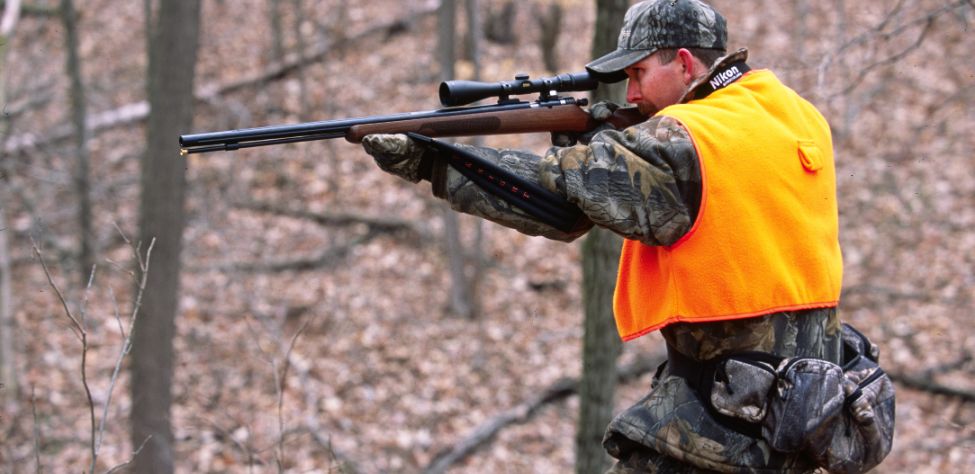
“When we walk to our tree stand sites and set up our tree stands, we leave human odor at the bases of those trees,” Sheppard says. “As a hunter climbs a tree, some of the bark and the dust on the sides of the tree fall to the ground. Perhaps the wind carries some of that bark and dust, with our human odor in it out past the tree. That night, when deer come through the area, the deer will smell where you’ve been and will avoid that particular spot.
“During the daytime, they may not change their routes and still go to the same places, but usually an older-age-class buck will travel 100–200 yards from where he’s smelled human odor. I avoid the regions I’ve hunted that season and won’t return there until the next season.”
Sheppard thinks deer put more emphasis on where you’ve been than they do on where you are now. “I’m convinced that deer know that hunters are creatures of habit. All of us like to hunt places where we’ve hunted before. A buck realizes that if he avoids a spot where he’s smelled human odor at any time, then his chances of survival are much greater.”
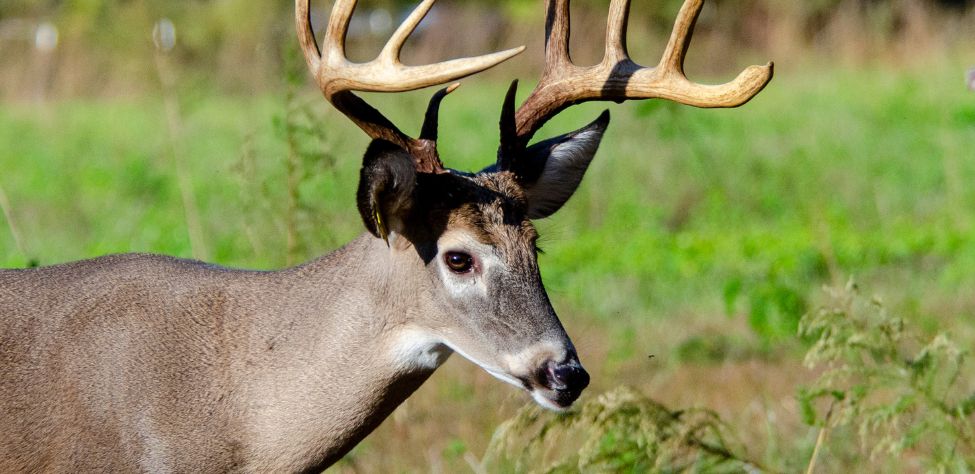
No Noise
Many hunters don’t believe that the noise the hunter makes going to or from his or her stand or while in the stand is that important. But Sheppard has determined that it is. So much research is being conducted by wildlife scientists and avid students of deer hunting that by keeping an open mind to learn all we can about the big deer we want to take in February, we’ll increase our odds of harvesting more and bigger deer.
Visit Dr. Sheppard’s webpage to learn more about his research and hunting tactics.
Looking for more content? Check out our YouTube channel and watch “Why I Prefer Tree Steps” by John E. Phillips.

How to Hunt and Take Big Buck Deer on Small Properties
In this book, you’ll hear from 14 hunters who either have gained permission or leased properties as small as six acres to as much as 250 acres, and how they consistently take older-age-class bucks off these little lands.
VERSIONS: AUDIBLE, KINDLE & PRINT

Jim Crumley’s Secrets of Bowhunting Deer
Using a black magic marker and a gray work jumpsuit, Jim Crumley of Buchanan, Virginia, drastically changed the nature and purpose of hunting camouflage when he created the first sportsman’s camouflage – Trebark. Crumley’s love of bowhunting and his desire to be more invisible changed hunting clothing forever.
In this hunting guide, he shares the wisdom that he’s learned throughout his lifetime about how to be a hunter, how to find a deer lease, how to scout for deer, and more.
Special features include how to:
- Have a magic 60 acres to hunt
- Decide the best equipment to use
- Find deer year-round
- Locate land to hunt
- Know the best place to put your tree stand
- Get bucks within bow range
VERSIONS: AUDIBLE, KINDLE & PRINT

How to Hunt Deer Like a Pro
How do you know if the land you hunt has a trophy deer on it? Wildlife manager Bob Zaiglin, of Uvalde, Texas and Jim Crumley, the father of modern-day hunting camouflage, tells you how to find out. GPS can make finding and taking that trophy buck easier. This hunting guide will teach you how to hunt big bucks where no one else can find them, how to call deer, and how to become versatile as a deer hunter, so that if one deer tactic doesn’t work, another one will.
In the chapter, “How to find Bucks at Scrape,” Dr. Keith Causey, retired professor of Wildlife Science at Auburn University, describes the best way to hunt a scrape.
Brad Harrison of Neosho, Missouri, is a nationally-known videographer, professional deer hunter and master at calling deer. Another master is Will Primos of Primos Game Calls. These two experts will tell the best deer calls and when to use them in this book.
And for over 20 years, Bo Pitman, lodge manager of White Oak Plantation, has been studying deer movement patterns. He explains what types of conditions are best for predicting deer movement.
VERSIONS: AUDIBLE, KINDLE & PRINT

Deer hunting and deer hunters are drastically changing each year. To learn new techniques for hunting deer and have more places to hunt, I’ve interviewed some of the best deer hunters in the nation and share their tactics in How to Hunt Deer Like a Pro: Volume II.
In Chapter 10, Jacob Lamar tells you his tactics for consistently taking older-age-class bucks on public lands in several states. Chapter 11, Bob Walker explains how to find places on public lands where you can hunt that 99 percent of the other hunters never have considered hunting. The Bonus Chapter with David Ramey tells you how, where, when and with what equipment to take big Kansas bucks on public lands by hunting in 100-degree weather when others won’t hunt.
Chapter 13, Mark Drury, his family and his guests take mature bucks every season by having more small places to hunt rather than one large property. Drury explains the strategy of having satellite farms to hunt that only may be 50-150 acres each or less. Chapter 15, Pat Reeve, who hunts far-northern states and Canada, says, “I don’t like hunting for mature bucks until the weather is 20 degrees or less.” Chapter 4, Dr. Larry Marchinton says that funnels are the most-reliable stand sites to hunt for big bucks and tells why.
VERSIONS: AUDIBLE & PRINT
Tomorrow: The Best Stand Sites for February Deer

